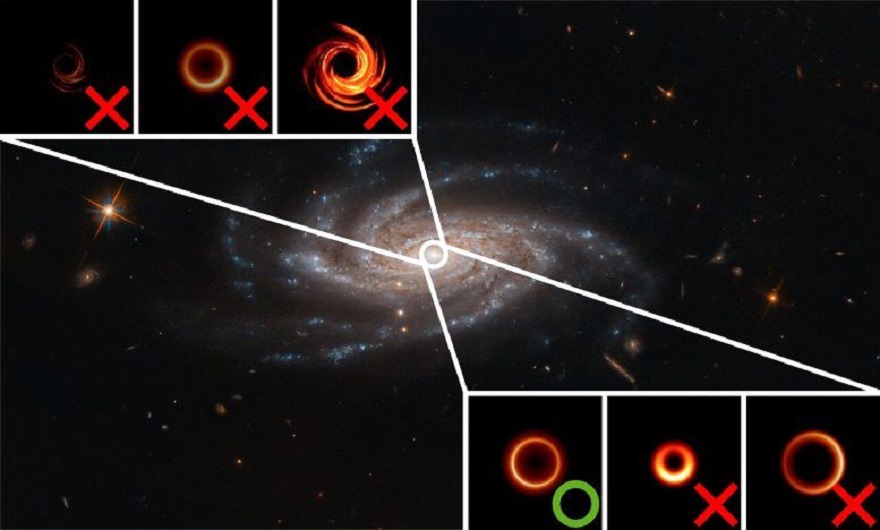Scientists were able to understand how supermassive black holes growin the centers of galaxies. To do this, they simulated millions of universes on a supercomputer and compared them with the picture observed in reality.

How supermassive black holes grow
There is a supermassive black hole at the center of every large galaxy, that weighs millions and hundreds of millions of times more than our Sun. Scientists have known for a long time that these monsters grow throughout their existence. Now they decided to find out exactly how this happens.
The processes accompanying the growth of supermassive black holes are hidden from us. They themselves do not emit practically anything — usually we see only accretion disks of glowing matter, which are located too far away for us to properly observe all these phenomena.
So scientists from the University of Arizona decided to resort to indirect research. They used a high-powered supercomputer to simulate virtual galaxies and the supermassive black holes inside them, and then used a machine learning algorithm to compare the results with what is actually observed.
What millions of simulations have shown
The project, called Trinity, analized three main components of the system that evolve over billions of years: galaxies, the supermassive black holes within them, and the dark matter surrounding these star systems. All three components interact with each other. The main mystery is how this happens exactly.
These components can interact with each other in different ways. There are millions of options, and for each of them the supercomputer has built its virtual universe. And then the machine learning algorithm came into play. It compared all these models with the data on supermassive black holes already obtained from observations.
Of course, there were quite a few that would roughly correspond to the real picture of the world. However, the computer was able to sift through millions of simulations and determine which one was the most similar. This option corresponds to a certain set of interaction rules based on known laws of physics.
The result of the study confirmed the theory that black holes grow together with their galaxies. At the same time, this process took place most intensively at the beginning of their existence, and then it slows down all the time.
It remains unclear why a black hole, the size of which is tiny compared to a galaxy, grows at the same rate. It is also necessary to find out how substance flows are redistributed.
According to the materials: scitechdaily.com

